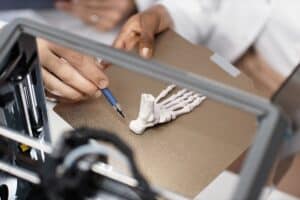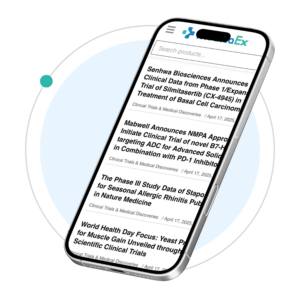Table of Contents
Medical Robotics
Rehabilitation using robotics in the field of medicine has gained a lot of attention recently due to its numerous advantages. The use of medical robotics allows a more thorough and intensive routine of activities that are specifically catered to the patient and their needs. Moreover, the use of robotics for this purpose can also overcome the limitations of humans and allows the amount and quality of rehabilitation to be increased.
The two types of Robotics which are used for the purpose of rehabilitation include:
Exoskeleton instruments
Exoskeletal instruments are a combination of electrical and mechanical components and allow the same type of dynamic activity as the individual themselves after they have worn it. These instruments are used to cover the affected region, whether it is an upper or lower limb. Moreover, the movement of these instruments is dependent on the type of joint present at the region of the limb – hence it only moves in the directions that the normal joints of the body can move, which prevents possible injuries.
End Effector Type
In the End Effector Type of Rehabilitation Robotics, the input for initiating the exercise is received from the distal-most part of the affected limb, which allows a natural activation of the body movements without the presence of artificial constraints. Similar to Exosletal Instruments, End Effector Type Robotics may also be used for both upper and lower limbs.

Internet Of Things (IoT)
IoT, which stands for Internet of Things, allows the connection of physical objects and devices with the Internet. This allows information to be easily sent and received through the Internet and has now been used to improve technologies like sensors, the conductance of real-time analysis, machine learning, and purposes of rehabilitation.
The rehabilitation devices and robotic systems are now being used in combination with IoT, which not only allows them to work as a wireless system but also allows the connection of several machines to one another. It also allows these devices to share the gathered information with cloud computing and big data analytics so that it can be stored and integrated properly. (2)
An example of a recent Rehabilitation System supported by IoT is the Stroke Rehabilitation System which contains a combination of a smart armband, 3d printed robot hand, and machine learning algorithms. The IoT sensing device in this system allows the measurement, processing, and transmission of signals so that they can be interpreted by the computer to allow a natural hand movement and active response to the patient’s volition.

Mobility Devices And Wheelchairs
The availability of mobility rehabilitation machines and devices might mean a lot more for the individual other than their means of mobility. It allows them to have better chances and opportunities for work, study, and social life. Without these devices, the affected individuals would be confined to their homes and be completely dependent on others for their needs.
Power Wheelchairs
An example of such a mobility device is a wheelchair, which allows individuals with disabilities to move with independence and live a fuller and inclusive lifestyle. Recent technological advances concerning wheelchairs have led to the development of power wheelchairs which allow the individual to have greater control over their movement. These wheelchairs are operated using a joystick which may be used to control numerous functions like speed, foot elevation, and seat recline, and elevation of the seat.

Orthopaedic
Injuries and disorders of orthopaedic origin may affect one’s life immensely due to their effect on the functioning of the musculoskeletal system and the development of associated disability. Hence, the purpose of Orthopaedic Rehabilitation is to restore the functioning of individuals with disabilities.
The latest Rehabilitation technologies used in the orthopaedic category include hospital-based rehabilitation and home-based rehabilitation.
Hospital-based
The hospital-based system usually comprises devices that allow continuous and passive movement in the patient, which may especially be used after a spinal cord injury. Another example is the use of Electromagnetic Sensors, which allow the measurement of movements of both upper and lower limbs during rehabilitation to allow a better evaluation and assessment of recovery.
Home-based
On the other hand, the home-based Orthopaedic rehabilitation systems may include technologies like inertial sensors, which may be used to measure the time of movement, along with videoconferencing to keep the morale of the patient high and keep them motivated for rehabilitation.

Physiotherapy
Physiotherapy, which is also known as physical therapy, is a form of rehabilitation treatment that may use both natural and preformed factors. While the natural factors which may be used include the use of water, mud, sun, and exercise, the preformed factors which may be used for physiotherapy include lasers, magnetic fields, electric currents, and ultrasounds.
The reason why physical therapy still remains one of the most popular means of rehabilitation is because of its ability to lower the pain, allow the stimulation of restorative and healing processes, increase the range of movements, boost the immune system and increase the biochemical performance of the individual. Moreover, a major advantage of this form of rehabilitation therapy is its lower cost and non-invasive nature.
Latest Physiotherapy Techniques
The recent advances in the field of physiotherapy have led to the development of the following:
- Laser Therapy: Laser Therapy is mainly used for the treatment of pain and paresthesia on an affected region of the body.
- Ultrasound Therapy: Ultrasound Therapy allows the reduction of the inflammatory activity at the target region, meanwhile causing fibrinolysis and imparting anti-irritant properties as well.
- Ultra-High Frequency Therapy: This type of therapy uses electromagnetic rays, which allow endogenous heat to be applied to the affected site. This allows recovery and rehabilitation of an injured site.

Conclusion
Whether it is Medical Robotics, the Internet of things, mobility devices, orthopedic devices, or physiotherapy, recent advances in each of these branches of rehabilitation have allowed them to work much more efficiently as compared to previous times. This means with continuing advances in medical technology; patients no longer have to go under weeks to months of bed rest after a surgery or an injury and may return back to their feet much sooner.







